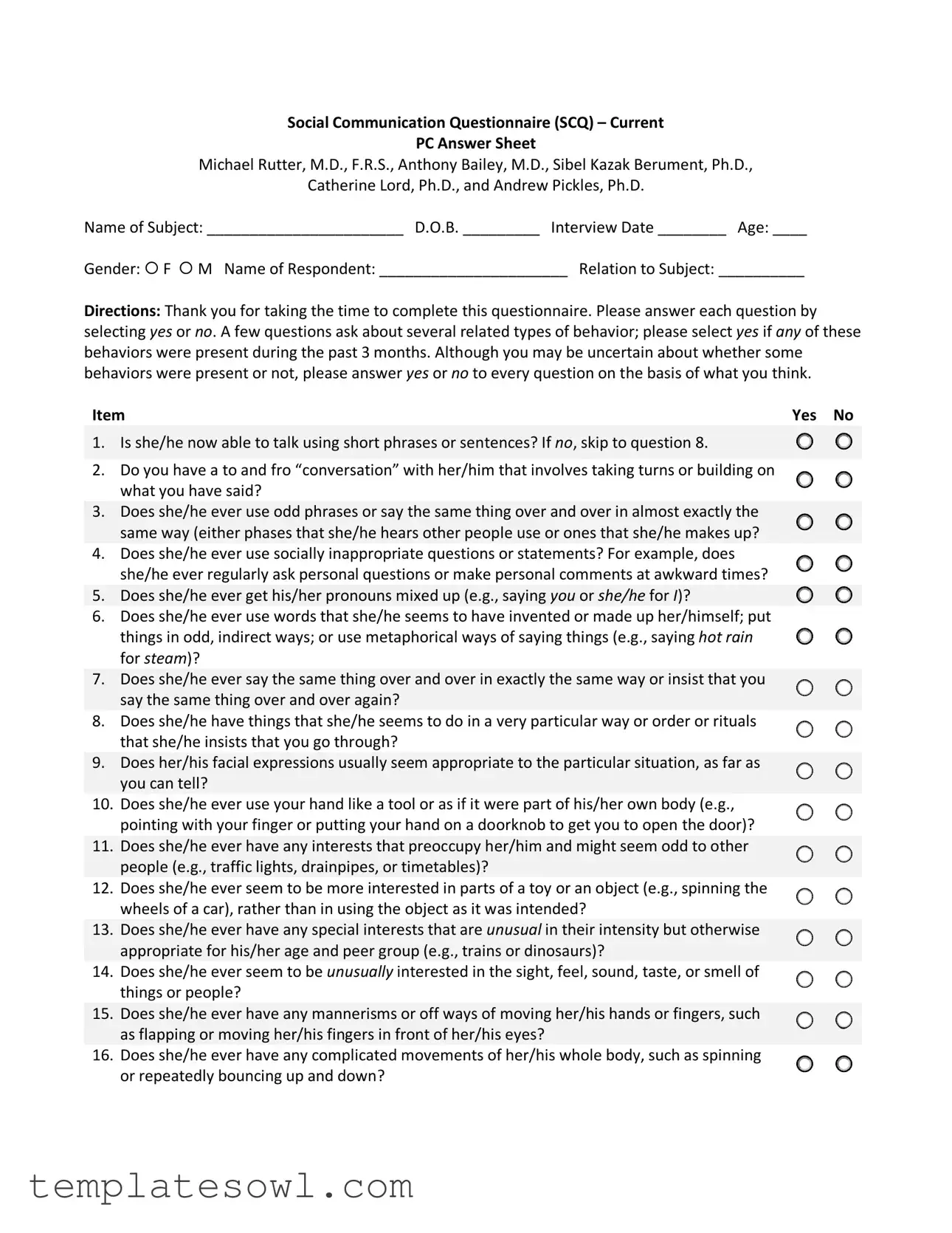Completing the Communication Questionnaire form can seem straightforward, yet there are common pitfalls many respondents encounter. One major mistake is skipping questions. When a question mentions to "skip to question 8," it can be easy to overlook the instruction entirely. Such oversights may result in inaccurate or incomplete data, ultimately affecting the assessment of the subject's abilities.
Another frequent error involves misunderstandings regarding the nature of the behaviors being evaluated. Respondents may misinterpret questions due to vague phrasing. For instance, when asked if the subject can converse by "taking turns," there could be confusion about what constitutes a functional conversation. This ambiguity may lead to false negatives or positives, skewing the results of the questionnaire.
Inconsistent standards pose yet another challenge. Some individuals might evaluate behaviors based on different timelines, measuring a behavior’s presence over various intervals rather than the specified three months. This inconsistency in interpretation can create gaps or inconsistencies in the information provided, leading to misleading insights about the subject's social communication skills.
Respondents often grapple with uncertainties about their answers. The directive to answer based on personal beliefs instead of concrete observations might result in emotional rather than factual responses. This situation can skew responses toward either extreme—over-reporting difficulties or underestimating certain behaviors, thus distorting the assessment's accuracy.
Another common issue is the failure to provide specific context for behaviors. Details about unique situations requiring certain responses can enhance the accuracy of the answers. For example, if a subject is noted to be socially inappropriate, clarifying whether this occurs primarily in unfamiliar settings versus with trusted individuals can inform the evaluator's understanding significantly.
The structure of the questionnaire can also lead to mistakes. Respondents might misread multiple-choice options or inadvertently skip responding to one due to clicking errors. Concentrating on one section at a time can help mitigate this issue and ensure that all questions receive due diligence.
Improper distractions during the completion process can further hinder accuracy. It is vital for respondents to find a quiet space free from interruptions. External distractions can lead to rushed or distracted answers, which could compromise the integrity of the responses.
Additionally, individuals sometimes fail to involve the subject appropriately. When the subject is capable of providing input, allowing them to contribute where appropriate can provide richer, more nuanced data. Participation fosters a more engaged and accurate evaluation of their communication strengths and challenges.
Respondents may also underestimate the significance of seemingly minor questions. Every behavior, no matter how trivial it may appear at first glance, serves as part of the broader communicative context. Neglecting to acknowledge these behaviors can result in an incomplete understanding of the subject's social communication abilities.
Finally, once the questionnaire is completed, neglecting to review answers is an error that can have consequences. Double-checking not only helps catch mistakes but also solidifies the integrity of the responses. Verifying that every item was considered thoughtfully can contribute to a more reliable and valid assessment of the subject’s communicative functions.


